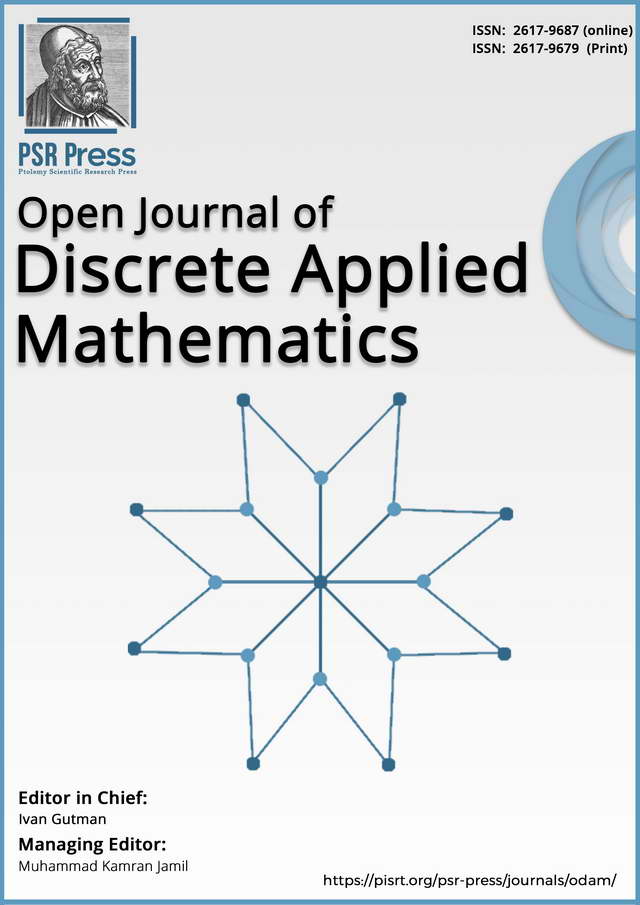Editor in Chief
Ivan Gutman
University of Kragujevac, Kragujevac, Serbia
State University Novi Pazar, Novi Pazar, Serbia
Co-Editor in Chief
Naveed Akhter
Punjab Higher Education Department, Lahore, Pakistan.
Managing Editor
Muhammad Kamran Jamil
Riphah International University, Lahore, Pakistan
Email: odam@pisrt.org
Associated Editor’s
Ioan Tomescu
University of Bucharest, Bucharest, Romania
Kinkar Chandra Das
Sungkyunkwan University, Suwon, Republic of Korea
Xueliang Li
Center for combinatorics and LPMC-TJKLC, Nankai University, Tianjin, China
Dumitru Baleanu
Cankaya University, Ankara, Turkey & Institute of Space Sciences, Magurele, Bucharest, Romaina
Abdul Khaliq
Riphah International University, Lahore, Pakistan
Juan Alberto Rodríguez Velázquez
Departament d’Enginyeria Informàtica i Matemàtiques, Tarragona, Spain
Tomas Vetrik
University of the free state Bloemfontein, Republic of South Africa
Zhibin Du
Zhaoqing University, China
Jeno Lehel
Alfred Renyi Institute of Mathematics, Hungary
Roslan Hasni @ Abdullah
Faculty of Ocean Engineering Technology and Informatics, Universiti Malaysia Terengganu,
21030 Kuala Nerus, Terengganu, Malaysia
Shaohui Wang
Savannah State University, Georgia
Pierpaolo D’Urso
Sapienza, University of Rome, P.le Aldo Moro, 5, 00185 ROMA, ITALY
Mehdi Alaeiyan
Iran University of Science and Technology, Iran
Shuchao Li
Central China Normal University, China.
Akinola Abolape Deborah
University of Agriculture, Makurdi, Nigeria.
Ali Ahmad
Jazan University, Saudi Arabia
Kashif Ali
COMSATS University, Pakistan
Muhammad Imran
United Arab Emirates University, United Arab Emirates
Sudev Naduvath
Christ University, India
Faisal Nadeem
COMSATS University, Pakistan
Akhlaq Ahmad Bhatti
National University of Computer and Emerging Sciences, Pakistan
Muhammad Kamran Siddiqui
COMSATS University, Pakistan
Muhammad Nauman
COMSATS University, Pakistan
Florentin Smarandache
University of New Mexico, 705 Gurley Ave., Gallup, New Mexico 87301, US
Tahir Mahmood
Department of Mathematics and Statistics, International Islamic University Islamabad, Pakistan
A. Borumand Saeid
Department of Mathematics, Shahid Bahonar university of Kerman, Kerman, Iran
Mustapha Aouchiche
United Arab Emirates University, United Arab Emirates
Gerhard-Wilhelm Weber
Poznan University of Technology, Poznan, Poland
Hamid Reza Karimi
Department of Mechanical Engineering, via La Masa 1, 20156 Milan, Italy
Martin Bohner
Missouri University of Science and Technology, USA
Miklós Krész
University of Szeged, Hungary
Muhammad Azeem
Department of Mathematics, Riphah International University, Lahore

